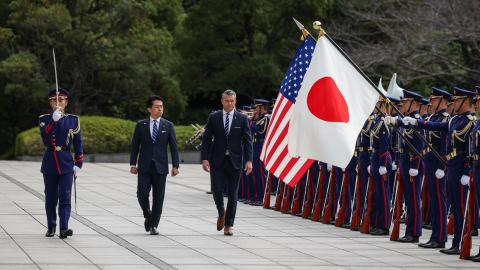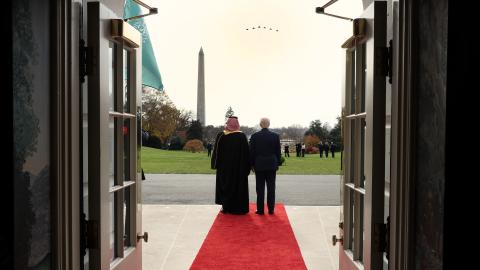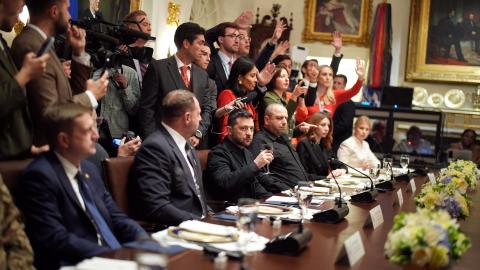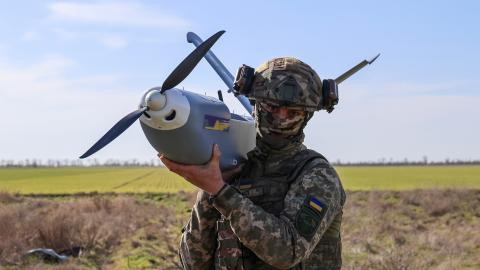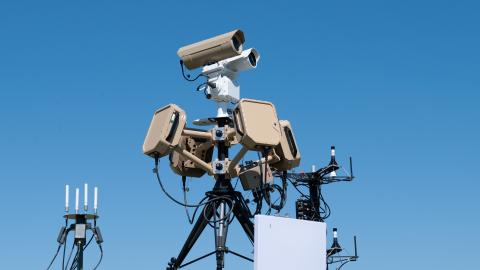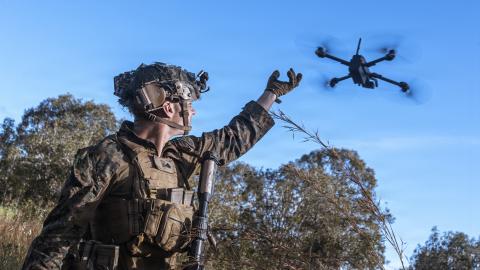Below Senior Fellow Can Kasapoğlu offers a military situation report about the war in Ukraine.
Executive Summary
• Moscow regenerates its forces: The Kremlin drafted 160,000 new soldiers, marking Russia’s largest conscription decree in a decade.
• Russia defies energy ceasefire: Russia continued to strike Ukraine’s energy infrastructure and population centers, a violation of the nations’ agreement.
• Drone warfare update: Ukraine scored the first ever air-to-air shotgun kill with an unmanned system. Kyiv also announced plans to boost production of first-person-view (FPV) drones and ground-based robotic fighters.
1. Battlefield Assessment
Last week Russia targeted Ukraine’s energy infrastructure, in violation of the deal that Washington brokered between Moscow and Kyiv in Riyadh. The Kremlin also continued to pound Ukrainian population centers with air strikes and missile salvos.
Though neither side made significant gains, tactical engagements flared along multiple critical flashpoints, including Toretsk, Velyka Novosilka, Pokrovsk, Kurahkove, Kupiansk, the Kursk-Sumy axis, Vovchansk, and Chasiv Yar. On the Kharkiv front, the Russian military attempted river crossings to maintain its maneuver advantage. Ukrainian formations repelled these efforts with drones and fire-support weapons.
Russia and Ukraine also fought on the electromagnetic spectrum. Reports from the field indicate that mounting electronic warfare activities interfered with several platforms, including combat aircraft and precision-guided munitions.
Despite Russia’s ongoing offensive efforts, Ukrainian combat formations managed to stabilize the front in Pokrovsk and even assumed a tactical offensive role in Toretsk. Still, the overall military balance favors Russia, and Ukraine remains dependent on intelligence sharing and arms supplies from its Western partners, particularly the United States.
2. Russia Conscripts 160,000 New Fighters
Last week Russian President Vladimir Putin signed the country’s largest conscription decree in a decade, drafting 160,000 men to its military. Russia urged its new troops to sign contracts with the Ministry of Defense to skirt laws preventing conscripts from serving in active combat operations.
The Kremlin’s latest decree provides a substantial boost to Russia’s armed forces. Though the Russian Federation drafts soldiers twice per year, it has not conscripted this many since 2011, when it added 203,000 new fighters.
To incentivize enlistment to combat roles, the new conscription order offers contracted soldiers various benefits. Incarcerated enlistees can be pardoned, wounded servicemen may earn a bonus between $5,600 and $11,200, and families of soldiers killed in action will reportedly receive around $34,000. Signing bonuses vary from region to region. While a recruit from Moscow receives $21,200, a sign-on from Krasnodar Krai gets only $11,200. A fighter from Dagestan, in the Caucasus, takes in a comparatively paltry $5,600. Still, the average Russian made only $735 per month as of June 2023, whereas Russian soldiers can earn up to $4,800 monthly in their first year. Russia’s Ministry of Defense contracted over 450,000 servicemen last year, and the Kremlin’s latest conscription order indicates that Moscow has no intention of slowing its force-generation efforts.
Putin provided further evidence that Russia is committed to sustaining the fight during a visit to the Arkhangelsk, a Yasen-M-class nuclear-powered submarine. The Russian leader boasted that his forces would finish off Ukraine with a relentless sustained offensive. Putin’s bellicose rhetoric provides an important reminder that the Russian military has not yet achieved the operational and political goals of the invasion: the complete occupation of the Donetsk and Luhansk regions and the end of Ukraine’s existence as an independent state.
3. Drone Warfare Update
Ukrainian counter-drone development paid dividends last week. Previous editions of this report have highlighted how Ukrainian designers are equipping unmanned platforms with shotguns to combat Russian drones. Footage from the battlefield reveals that Ukrainian drone operators notched the first air-to-air shotgun kills inflicted by robotic assets, a milestone for emerging and disruptive defense technologies.
Oleksandr Kamyshin, an advisor to Ukrainian President Volodymyr Zelenskyy, stated last week that Ukraine is now able to produce five million FPV drones per year, up from two million in 2024. Ukraine boasts 150 companies devoted to robotic warfare efforts. Together these outfits can produce up to 4,000 drones per day. This drone production prowess is one of the few advantages that the Ukrainian military enjoys over Russia’s larger industrial base.
Ukraine is not only investing in the skies. Kyiv aims to field 15,000 unmanned ground vehicles (UGVs) in 2025 for use in dangerous combat zones. This $150 million UGV initiative includes 31 contracts with arms producers and indicates that both Ukraine and Russia will continue to use robotic ground systems.
